IN THE SPRINT OF TIME
Preparing For The Run Of Your Life
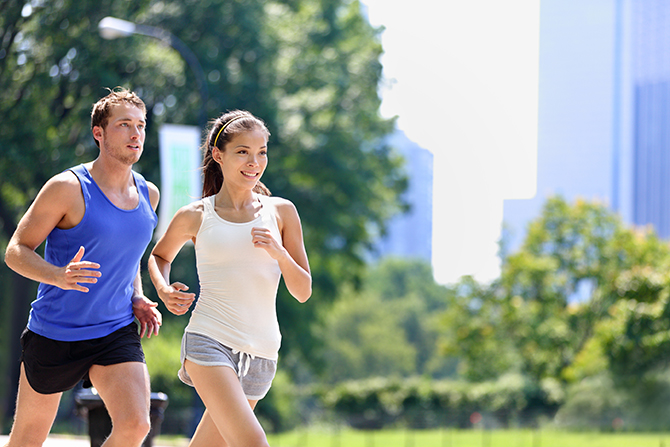
By Patricia Canole
With warmer weather comes the fleet of runners who take their workout outdoors. Spring is the prime season! Whether you’re a weekend warrior or a devoted marathoner, a training plan is necessary to build strength and endurance. However, if you’re not performing the proper stretches and listening to your body’s cues, an injury could prevent you from ultimately crossing that finish line.
We went to the experts at Professional Physical Therapy to guide us on proper stretches, common running injuries, and more. Professional Physical Therapy, is the leading provider of rehabilitation services throughout New York City and operates 106 outpatient therapy centers: Equinox Fitness Centers, Blink Fitness, STACK Sports Performance Center, and Golf & Fitness Academy to name a few. The company’s outpatient physical therapy centers provide treatment to patients suffering from musculoskeletal impairments associated with orthopedic and sports injuries and other medical conditions.
For more information on Professional Physical Therapy, visit professionalpt.com.
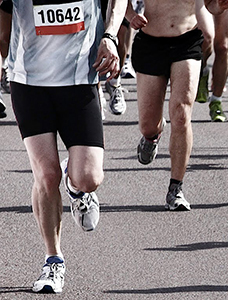
COMMON RUNNING INJURIES
Amanda Brick PT, DPT
Common running injuries are often due to overuse, and learning how to avoid them can keep runners moving, as well as help them reap mental and physical health benefits. Every time a runner’s foot hits the ground, they are effectively absorbing the weight of their entire body on one leg. Make sure sneakers are changed regularly, and warm up/cool down can also help. But most importantly, make sure muscles are strong enough to withstand these constant forces.
Three common knee injuries, Runner’s Knee/Patellofemoral Pain Syndrome (pain around the kneecap), Patellar Tendonitis (pain below the knee cap), and ITB (Iliotibial Band) Syndrome (outer knee pain) are most often due to glute weakness and tight ankles. Stand up and do a single leg squat. If you see your knee tracking inward, instead of staying over your toes, this is indicative of abnormal mechanics when you run, and puts you at risk for injury.
 Amanda Brick
Amanda BrickPerforming calf stretches and glute exercises, like a clamshell (lie on your side with knees bent, feet together, and lift your top knee) will help give you the stability you need to maintain correct form. Achilles Tendonitis (pain in the back of the ankle/heel), Plantar Fasciitis (pain on the bottom of the foot), and Shin Splints can be avoided by not ramping up mileage, incline, or speed too quickly. Maintain glute strength and calf flexibility, as well as flexibility of your first toe, which will allow you to push off better. In summary, strength and flexibility will stop the pain from stopping you.
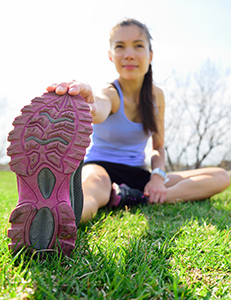
STRETCHES AND EXERCISES TO IMPROVE FLEXIBILITY
Ryan Yelle PT, DPT, OCS
Runners can be particularly susceptible to muscle imbalances, typically from the extensive training required to prepare for a marathon. When combined with lifestyle influences (such as sitting for prolonged periods of time at work), and weakness in the gluteal muscles, shortening of the hip flexors and hamstrings can occur. These imbalances lead to inefficiency in movement patterns and require the body to work harder than is necessary.
 Ryan Yelle
Ryan YelleTo improve flexibility in the hip flexors, a kneeling runner’s stretch (half kneeling with one leg forward and the other trailing behind the body) is a simple exercise that can be performed almost anywhere. A seated runner’s stretch (sitting on the ground with one leg extended, reaching forward towards the foot) is an easy way to improve muscle length in the hamstring group in the back of the thigh.
To combat gluteal muscle weakness, and thus improve pelvic stability while running, training the gluteus medius is essential. With the use of a resistance band, lateral band walks (keeping the resistance band around both ankles, and performing side steps, with hips and knees slightly flexed in an “athletic stance”) is another way to target this crucial pelvic stabilizer.
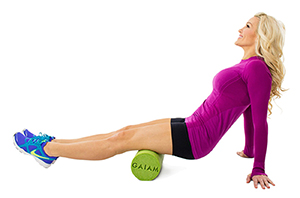
PROPER USE OF A FOAM ROLLER
Shoshana Gelb PT, DPT
Proper use of a foam roller to loosen up fascia helps to allow structures to move freely, decreasing tension in muscles and joints, as well as improving mobility. Although it would make sense to target just the one pain point, it is important to work on the surrounding muscles and connective tissue, as they can be a contributing factor to your source of pain. Also, it is important to work on surrounding structures to avoid increased inflammation, which can further cause discomfort.
 Shoshana Gelb
Shoshana GelbFor example, when noting trigger points into the Iliotibial Band (ITB)—which is the connective tissue running from the outside of the hip to the outside of your knee—it is recommended that you address tightness along the quadriceps and glute muscles, to decrease tension on the ITB as a whole. However, working solely on one pain center for too long can further cause inflammation and increase overall discomfort. When using a foam roller, you should think about working on a targeted area for 2-5 minutes, to sufficiently allow the fascia to release. If hitting an area with a trigger point, you can stay on that area for 60-90 seconds to allow it to release, before moving away from the pain center to surrounding structures. Lastly, it is important to ease into foam rolling, progressing toward using your full body weight to apply pressure for myofascial release. Foam rolling can be used as a pre-workout warm-up activity to improve mobility for peak performance, as well as part of your recovery following running, to prevent thickening, tightening of fascia and improve overall muscle joint/pain and soreness.
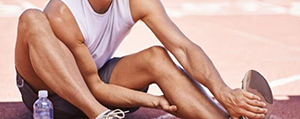
AVOID FOOT CRAMPS AND CHARLIE HORSES
Ohi Aregbeyen PT, DPT
There is no doubt that diet plays a role in the prevention of foot and leg cramps. Regulating intake of water, sodium, potassium, and magnesium can help to prevent cramping. However, stretching and strengthening of the involved structures can also provide a lot of benefits.
The primary structure involved in leg and foot cramps is the calf. The calf is made up of two muscles, the gastrocnemius, and the soleus. The gastrocnemius has more Type II muscle fibers (fast twitch) and is used more for explosive actions, such as running and jumping. The soleus has more Type I muscle fibers (slow twitch) and is used more for endurance activities, such as walking and standing. Stretching and strengthening both of these muscles can help reduce the occurrence of cramps.
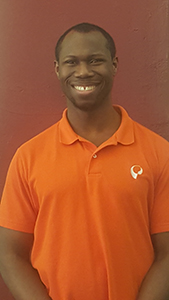 Ohi Aregbeyen
Ohi AregbeyenA common and effective way of strengthening the gastrocnemius is the standing heel raise. Perform 2-3 sets of 8-12 repetitions to build strength in these mostly Type II muscle fibers. A practical exercise for targeting the soleus muscle is the seated calf raise because it is performed with bent knees. Perform 3-5 sets of 15-20 repetitions. The increased number of sets and repetitions addresses the fact that this is an endurance muscle.
A standing calf stretch against a wall with the knee straight is an excellent way to stretch the gastrocnemius. Stretching of the soleus is performed in the same exact position except both knees are bent. Hold for 30 seconds and perform three sets of each.
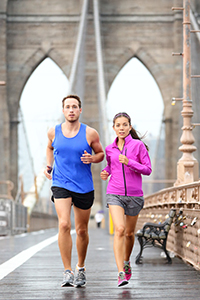
SOOTHE MUSCLE CRAMPS/SHIN-SPLINTS
Natalie Lovitz PT, DPT, USA-W
Shin splints, also known as medial tibial stress syndrome, can result from a variety of different causes – most often from training too much and ramping up your training schedule too quickly. This overuse injury can start as an ache along the front of your lower leg and progress into sharp shooting pains during activity. Unfortunately, once the pain progresses to this point, the recommended treatment is rest and limited running, while your body recovers. Preventative measures are often the best course of treatment. To help prevent muscle cramps or shin splits:
• Warm up/cool down Actively warming up your muscles before a run is best. Start with a dynamic warm-up and finish your run with a cool down walk, followed by gentle stretching.
• Stretch your calf Use 30-second holds, just at the point where you first feel the stretch.
• Ice After a run, use ice on your shins to help with pain. Ice is an anti-inflammatory and will help reduce lingering swelling and delayed onset muscle soreness within the following day or two.
 Natalie Lovitz
Natalie Lovitz• Take rest days More isn’t always better. Runners should take at least one day of complete rest, using recovery days or cross-training intermittently, as well.
• Slowly ramp up After experiencing shin splints or an injury, return slowly. Only increase running distance by 10 percent a week.
• Consult a medical professional Shin splints can progress to stress reactions and stress fractures. If pain persists see a health provider.




